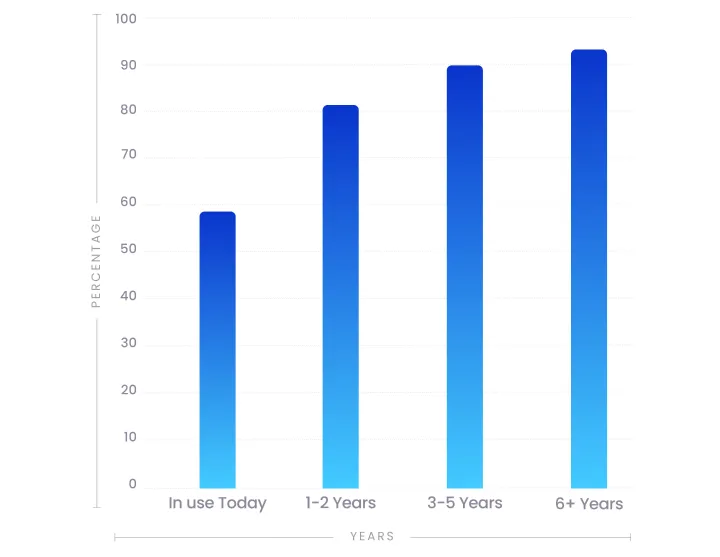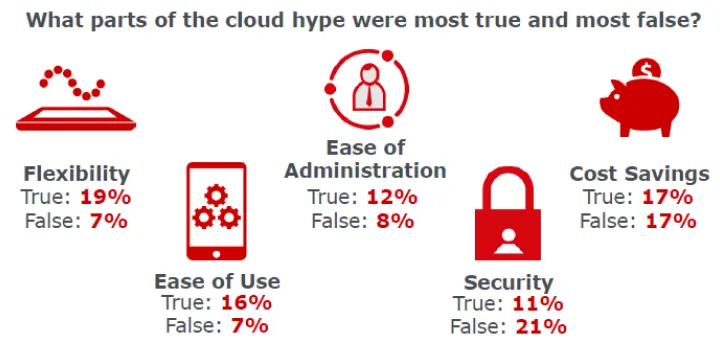Much has been said about cloud logistics technology solutions—more specifically, all the benefits that businesses can reap by using the cloud.
But how can you know if cloud computing is right for your logistics business? Well, it depends.
Click Here: Improve Your Operational Efficiency and Uptimes with Managed IT Solutions Solution
In just a few years, cloud logistics solutions have taken the industry by storm, and decision-makers have considered “moving to the cloud” as the magical solution that will eliminate technology headaches and reduce costs.
These promises sometimes feel like the promises of the mythological “Fountain of Youth.”

Source: Wiki
Cloud computing is just another tool in logistics technology solutions, and businesses must carefully consider the pros and cons before moving any system to the cloud.
Regardless, businesses have adopted cloud computing at a very fast pace, and decision-makers must not ignore this disruptive technology.
Cloud Computing & Storage Adoption Rates

Source: MHI Annual Industry Report 2020
In this blog, we help you explore whether cloud computing is right for your business by evaluating the well-advertised benefits and some hidden secrets that no cloud vendor talks about.
Cloud Promises – And What No One Tells You
Reaping the benefits of cloud-logistics technology lies in a strategic understanding of which systems make sense for your business to move to the cloud and which should continue running in-house.
Promise #1: “The Cloud Reduces Technology Costs”
A company that is planning on implementing, updating, or replacing a system is going to need to invest capital in buying hardware and software licenses. In the cloud, this large initial investment is unnecessary as cloud providers will include the costs of hardware and licenses in a monthly fee.
Additional savings come from reducing the need for IT personnel to maintain the technology infrastructure (servers, networks, etc.). The salaries of infrastructure technology professionals range between $35,000 and $75,000 per year.
But There’s More to It
Cost can’t be evaluated without accounting for the cost accumulation inherent when using the cloud. Cloud costs accumulate month after month with no end date. This cost becomes a recurring monthly expense with no residual value left on the balance sheet.
Another cost consideration is that even if systems are running from the cloud, the business will still need to pay for the implementation, management, and maintenance of some parts of the systems. Software-as-a-service (SaaS) cloud solutions offer the least IT administration overhead, while infrastructure-as-a-service (IaaS) comes with more overhead as servers still need to be configured, managed, and monitored.
Keep in Mind
If cash flow is an issue, capital needs to be invested in other areas of the business, or if the system to be implemented is complex and critical to business operations, the company might be better off moving to the cloud.
But if the system is not complex, not critical to business operations, or doesn’t require a large capital investment, the organization might be better off running the systems in house and eliminating the recurring monthly cost associated with the cloud.
Also, depending on the pricing model, you might end up paying more (or less) for computing power.

Source: CDW
Promise #2: “The Cloud Increases System Availability”
The ability of cloud solution providers to maintain systems with very little downtime is unprecedented for many small and midsize businesses.
This is because leading cloud providers have built state-of-the-art technology infrastructures that span hundreds of servers, networks, and data centers across different geographical locations. Their technology infrastructures are built with redundancy and failover in mind.
In the occasion of a server failure, another server takes over with no downtime or need to restore data (in most cases). In the case of an internet or power outage, other internet providers and power sources are on standby, waiting to kick in automatically.
Most of their hosting locations are built to protect systems and data from disasters. In some cases, systems could even be distributed across multiple data centers across different geographical locations.
Again, There’s More to It
Although cloud vendors such as Microsoft, Amazon AWS, Rackspace, and Google can offer high levels of resiliency, customers still depend on the reliability, availability, and speed of their internet connections.
In fact, now that they’re in the cloud, their business deeply depends on internet connectivity. A failure of this vital component (or any network device) can bring all business operations to a stop.
But this is not all.
Not every company that offers cloud solutions has built its systems with the same level of reliability and security.
With an industry expected to reach $173 billion by 2026, it shouldn’t surprise you to encounter vendors calling themselves “cloud solution providers” with infrastructures that are very poorly set up and are at risk of system failure, data loss, and hacks.
Source: Statista
Keep in Mind
If you decide to move to the cloud, keep in mind that system availability will depend on the network infrastructure of your company. Likewise, the speed of your systems will depend on the speed of your internet connection.
If you are looking for no system downtime, contract the service of a reliable internet provider and request a dedicated internet connection with a service level agreement (SLA) that guarantees speed and availability.
Promise #3: “The Cloud Is Scalable & Elastic”
Another well-known benefit is that the cloud is scalable and elastic. This means that at any given time, you could, within minutes, add or reduce computing resources (servers, memory, CPU, storage, etc.).
Cloud providers can provide this level of elasticity by leveraging virtualization. Virtualization allows cloud vendors to host multiple servers (or PCs) within a single piece of hardware.
Virtualization also allows customers to bring more servers (or computers) online and add more resources (memory, CPU, etc.) as long as the main physical server has such resources.
If the main system doesn’t have additional resources available, the system can tap into another physical server(s) that can provide the required resources.
And, Of Course, There is More to It
Although cloud vendors have the capability of scaling systems seamlessly, sometimes they over-allocate/over-subscribe their systems to increase profitability and asset utilization.
While a customer might be under the impression that they are adding more CPU or memory (and, of course, paying for it), behind the scenes, the system could be adding virtual resources but not necessarily the equivalent of physical resources.
For example, a customer might be adding 4GB of memory to a server, but the system might not be allocating the equivalent physical memory.
This is known as oversubscription, and it refers to the allocation of more resources than what is available in the physical system. When this happens, latency occurs, and systems become slower.
Keep in Mind
If you need to guarantee that systems never slow down due to over-allocation, you might want to consider a cloud provider that offers dedicated physical servers. By doing so, you can control how much you want to oversubscribe your system(s) or not.
However, if the requirement is to add additional resources at any time without having to invest in hardware and spend a significant amount of time, the cloud is the way to go.
Summary
The only way to know whether cloud logistics solutions are right for your business is to clearly define your objectives and requirements and see how they fit in a cloud scenario.
There are pros and cons associated with going to the cloud, and businesses must carefully evaluate them. There has never been and will never be a one-size-fits-all solution for a complex topic such as logistics technology and business.
If you want to learn about warehouse digitalization and optimizing warehouse processes, you can follow us on LinkedIn, YouTube, X, or Facebook. If you have other inquiries or suggestions, please contact us here. We’ll be happy to hear from you.












